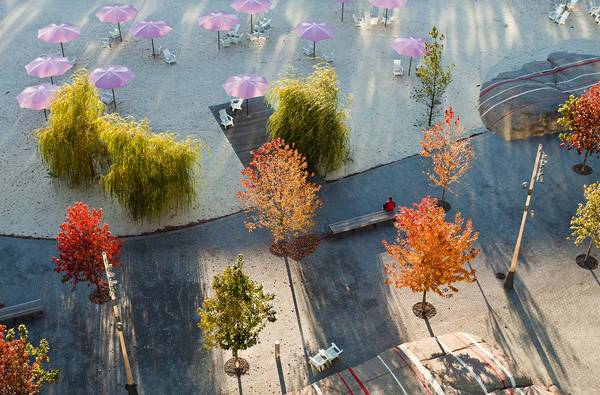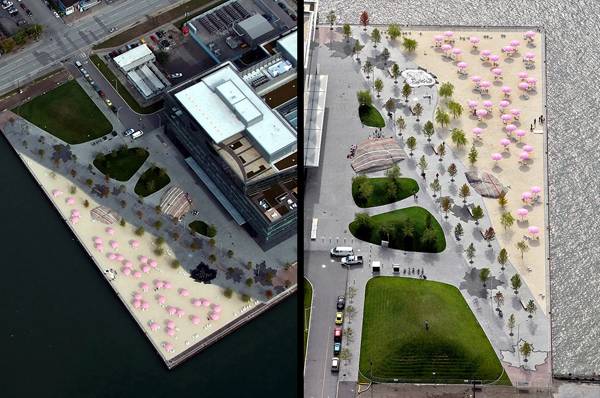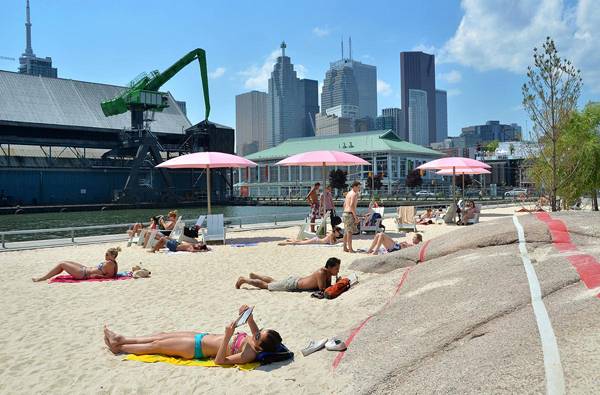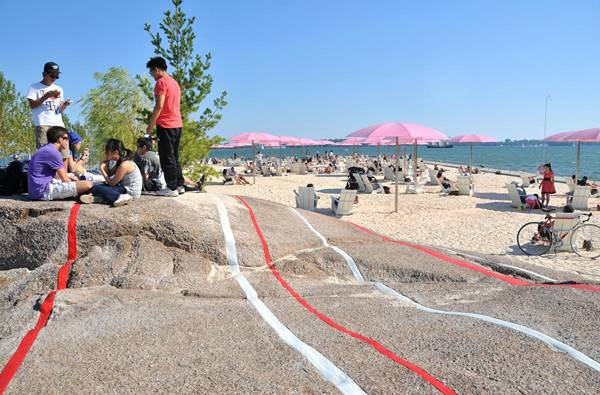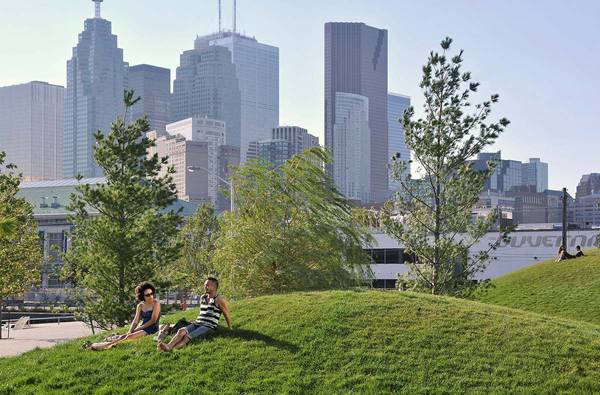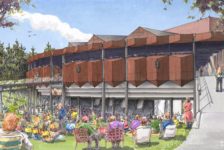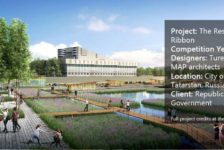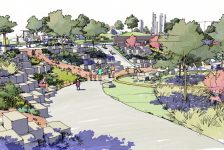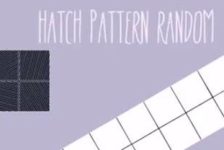Sugar Beach is a public park created as part of the large, multi-stage Toronto Water Front revitalization program. This man made urban beach has transformed an old industrial area into a vital space for residents and tourists. Sugar Beach, designed by Claude Cormier architects paysagistes, was inaugurated in 2010. In an 8,500-square-meter site between Lake Ontario and the Corus Quay building, three areas were created: a triangular beach, a diagonal promenade, and a plaza.
The beach has a harmonious design, with two perpendicular sides bordering the water — the largest side marked by wave-shaped boundaries.The promenade runs in the diagonal axis between the beach and the plaza, linking the Queens Quay sidewalk to the waterfront. The plaza features mounds and trees and is located next to the Corus Entertainment building. Its relationship to the neighboring glass edifice is made through a transparent green façade that allows those outside the building to visually access the inside space. As the park is contemporary to this green glass building, it is natural that they both are designed in a way that enables their integration. But it is for the connection with one of the few remaining factories operating in the harbor area that the park is known. Sugar Beach is a reference to Redpath sugar refinery located west of the park. The factory building might not entice people to view it if there were not an exciting place like the designed beach next to it. On the beach, while sitting on white chairs under the shade of pink umbrellas or under the pines and willows planted in the sand, it is possible to alternately observe the dock, where a crane unloads raw sugar from a cargo ship into the refinery; the Toronto skyline in the background; and the lake. By treading the sand and looking at the sugar being unloaded, the visitor can relate both granulated materials and make the connection between the beach and the factory. The sugar theme is also present in other components, but the design’s symbolic language allows for other interpretations. For instance, the red and white stripes that decorate the rock on the beach and the rocky mound in the plaza may refer to candies, honor the national flag, or even play with the images the sugar factory’s name can bring to mind. For visitors with different backgrounds, these relations might not be interpreted so easily; the parallel stripes could just be perceived as an invitation to have a seat on the rock to re-energize body and mind. If sugar cane is the language of the beach, maple trees are the theme of the promenade. Maple leaf patterns were built into granite on the pavement, and two lines of mature maple trees were planted along its edges. (as can be seen in picture of birdseye view above) When they grow, they will provide shade for the benches, creating a comfortable place to read, rest, or enjoy the different views of the park. More than a Canadian symbol, maple trees and their leaves may be seen as the local sugar in contrast to the more foreign sugar cane variety. Both are metaphors for energy that is essential to maintain the life; the harbor also can be seen as a meeting point where these goods are exchanged. In the opposite corner of the park, the visitor finds the plaza, formed by four grass mounds and a larger rock where red and white stripes relate coherently to the other rock on the beach. These elevated surfaces shape the space around in a way that works conveniently for performers as well as for the audience. In addition, the grass berms are perfect places to rest and sunbathe. To complete this urban beach park — where swimming is not allowed because it is located in the harbor area — water fountains were embedded in the granite pavement. They are a really fun way to cool off in the summer days. Toronto Sugar Beach is an inspiring example of how abandoned places can be reintegrated into the city. The harmonic composition, the relationship with the new buildings, and the reference to the history have produced a vibrant leisure space worth visiting. See more photographs of this project here. Article written by Tania Ramos Gianone Published in BlogLogin
Lost Password
Register
If this is your first time on the new site, please click "Forgot your password?". Follow the steps to reset your password. It may be the same as your old one.


